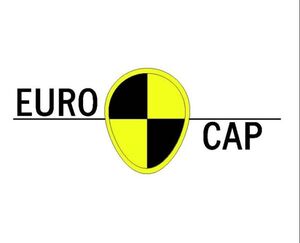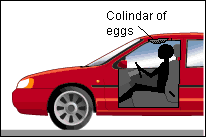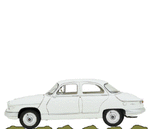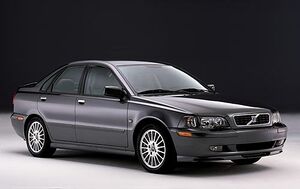Euro EggCAP
“Is there an EggCAP rating in new cars?”
“Euro EggCAP.”
Euro EggCAP is a car safety organisation that focuses on the car's ability to absorb bumps without violently shaking the cabin. Established in 1995, cars were tested on a rocky road to test their ability to absorb bumps in really bumpy conditions and to really test this, the cars contained eggs to carry along through the test. Ratings were given for any eggs cracked and broken or unscathed.
Origins[edit]
Euro EggCAP was originally a set of tests performed by French firm Citroen and other automakers on their prototypes. Since 1931, they did test runs on bumpy country roads in France to test how well the cars absorbed bumps. Each car tested had 60 eggs on 2 cartons laid on the back seat, and number of eggs broken would be recorded after the test. The score indicated the number of eggs left intact after the completion of the test run. For example, if 15 of 60 eggs were cracked, the car rated EggCAP 45. Citroen and Peugeot cars were ranked the best while other French cars such as Renault and Dacia were ranked much lower because eggs bounced off their cartons during the test runs.
By 1940, other carmakers all over Europe came to the test track to test out their cars' suspension systems. Mercedes Benz was one of the most well-known carmakers to use the test track to help improve their suspension systems.
Problems soon developed. So many automakers from all over the world sought the test track to discover why their own cars were outperformed by French cars that securing time on the test track in France became increasingly difficult. To solve this issue, carmakers developed their own bumpy test tracks for their prototypes. By 1973, testing at the French bumpy roads had ended, and many car makers agreed that the tests were obsolete.
That changed in 1994 when a car quality investigator discovered that the manufacturing quality of many cars deteriorated such that they delivered a bumpy ride even a straight, smooth highway made of glass. Outraged car owners campaigned for the Euro EggCAP standard to return, and, one by one, governments around the world brought back the tests in a modified form.
How the test goes[edit]
Setup
There are four things required to do a Euro EggCAP test. First, they need a car to test. Second, the car will have a small colander of 4 eggs attached by duct tape in the roof of the car above the driver's head. Thirdly, the test requires a rocky track. Usually located at the test site, the track is constructed with concrete with rocks and bits of broken cement and bricks. A 328 ft (100m) long track is sufficient. And lastly, the driver is required.
Testing procedures
The testing procedures got more interesting. Only one car was tested at a time. During the test, cars being tested are to be driven at speeds of 50 km/h (30 MPH) on the rough track. At the end, researchers recorded how many eggs were broken and how many remained intact.
The ratings[edit]
The way the ratings go in Euro EggCAP are simple. If any eggs are cracked or broken, one point is lost per 1 egg. Here are the ratings:
4 points: Best No eggs cracked or broken
3 points: Good 1 egg cracked of broken
2 points: Average 2 eggs cracked or broken
1 point: Marginal 3 eggs cracked or broken
0 points: Worst All eggs cracked or broken.
The best and the worst performers[edit]
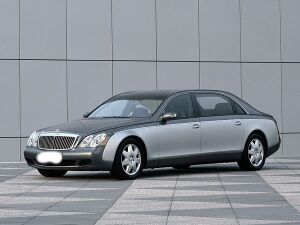
The Best
The best Euro EggCAP result goes to the Maybach 62 tested in 2002. Its hefty 6,184 pounds has managed to absorb the bumps thanks to its advanced suspension system which helped keep the car stable through the track, protecting every egg from damage. Suprisingly, although its wheels appear small compared to the big body, it did little to interfere with its smoothed out ride but best of all, the test driver got away with no yolk in his hair whatsoever.
Rating:4
The Worst
The worst Euro EggCAP result goes to the Volvo S40 tested in 1995. Volvo's reputation of being safe didn't much cover rough ride absorption as proved by the test. Its body rocked through the track and compared to the Maybach, the Volvo's lighter, it has a marginally higher ride and it's cheaper and none were any help. Worse still, its hard suspension made matters worse and the result is that all of the eggs are broken. After the test, the test driver had go in the shower to wash his hair but the car retained its shape well.
Rating:0
Other EggCAP organisations worldwide[edit]
Around the world are various versions of Euro EggCAP listed below.
- IIES (Insurance Institute for Egg Safety)
The Insurance Institute for Egg Safety is an EggCAP organisation running in America. All cars sold in America are tested. Compared to the Euro EggCAP test, the IIES test track is longer (up to 3445 ft long) and the the cars are tested at a slower speed of 40 km/h (24.84 MPH) for equivalency with the EuroEggCAP test.
- JapEggCAP
JapEggCAP is a Japanese version of Euro EggCAP but unlike IIES and Euro EggCAP, they test motor vehicles other than everyday cars. In JapEggCAP, people movers, off roaders and commercial vehicles are also tested.
- EggCAP Asia Pacific
EggCAP Asia Pacific tests cars around the Asia Pacific region and is similar to Euro EggCAP. However, the tests are done under controlled temperature conditions.
- EggCAP Canada
Canada has its own EggCAP facility which is formally known as EggCAP Canada. It uses the same travelling speed as the IIES, and handles all cars tested by IIES and available in the Canadian market. Its test track is rougher. These tests benefit test drivers more than the others because of the cooler climate.
Facilities[edit]
Here are some Euro EggCAP facilites:
- Oxfordshire, England, United Kingdom
- Lladwelsky, Wales, United Kingdom
- Metz, France
- Bialystok, Poland
- Espoo, Finland
